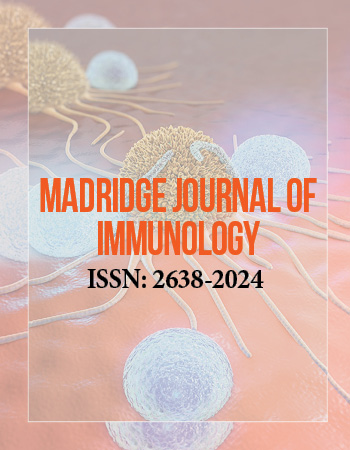International Conference on Immunology and Immunotechnology
November 1-3, 2017 Barcelona, Spain
Pseudomonas aeruginosa Bacteria Activates Chloride Ion Channels in Immune Cells
1Department of Infection, Immunity and Cardiovascular Disease, the University of Sheffield, UK
2Department of Biomedical Science, the University of Sheffield, UK
Cystic fibrosis (CF) is a disease that affects respiratory function and in the UK it affects about 151 young persons per 100,000 people. The disease arises due to dysfunction in cystic fibrosis transmembrane conductance regulator (CFTR) protein, a protein that has been shown recently to influence calcineurin activities in cell secretion. CFTR dysfunction causing mucus lodging and bacteria colonisation of the airways and intestinal linings leading to functional alterations of immune cells. In airways, CFTR has been shown to form a functional complex with S100A10 and AnxA2 in a cyclic adenosine monophosphate (cAMP)/ protein kinase A (PKA) dependent pathway. The multiprotein complex of CFTR, S100A10 and AnxA2 is also regulated by protein phosphatase 2B (PP2B). The objective of this study was to investigate whether chloride ion (Cl-) channels are activated by lipopolysaccharide (LPS) from Pseudomonas aeruginosa (PA), and whether this activation requires cAMP/PKA/PP2B pathway.
Human monocytes and macrophages were used in the study. Whole cell patch records showed that LPS from PA can activate Cl- channels, and this activation appears to require an intact PKA/PP2B signalling pathway. The Gout in the presence of LPS was 2185.97± 226 µS/cm2 (n=27). Gout was significantly inhibited by diisothiocyanatostilbene-disulfonic acid (DIDS), an outwardly-rectifying Cl- channel (ORCC) blocker, 1204.40±132 µS/cm2 in the presence of DIDS. CFTR channels were inhibited using CFTRinh172 and this reduced Gout to 838.68±101 µS/cm2. Data from cells stimulated with LPS from PA that were pre-incubated with PKA inhibitor or PP2B inhibitor showed no DIDS and CFTRinh172 sensitive currents. Activation of both CFTR and ORCC is therefore observed in response to exposure of monocytes and macrophages to LPS. Ongoing work is investigating whether this activation plays a subsequent role in the release of pro-inflammatory molecules.


